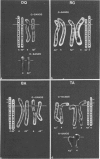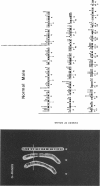Abstract
A 5.5-kilobase (kb) single sequence DNA fragment (G8) reveals the DNA polymorphic locus D4S10 on Southern blot analysis. This locus is closely linked to Huntington disease and has been mapped to chromosome 4 short arm using human-mouse somatic cell hybrids, and specifically to chromosome 4 band p16 using DNA from individuals with deletions of chromosome 4 short arm who exhibit Wolf-Hirschhorn syndrome. With in situ hybridization techniques, we have confirmed the location of D4S10 on chromosome 4 and further localized it within band p16 utilizing five patients, four with overlapping chromosome 4 short-arm aberrations. The DNA segment G8 was hybridized to the mataphase chromosomes of the five patients. Two of them have different interstitial deletions of one of the chromosome 4 short arms (TA and BA), two have different chromosome 4 short-arm terminal deletions (RG and DQ), and one has a normal male karyotype. By noting the presence or absence of hybridization to the partially deleted chromosomes with known precise breakpoints, we were able to more accurately localize probe G8 to the distal half of band p16.1 of chromosome 4.
Full text
PDF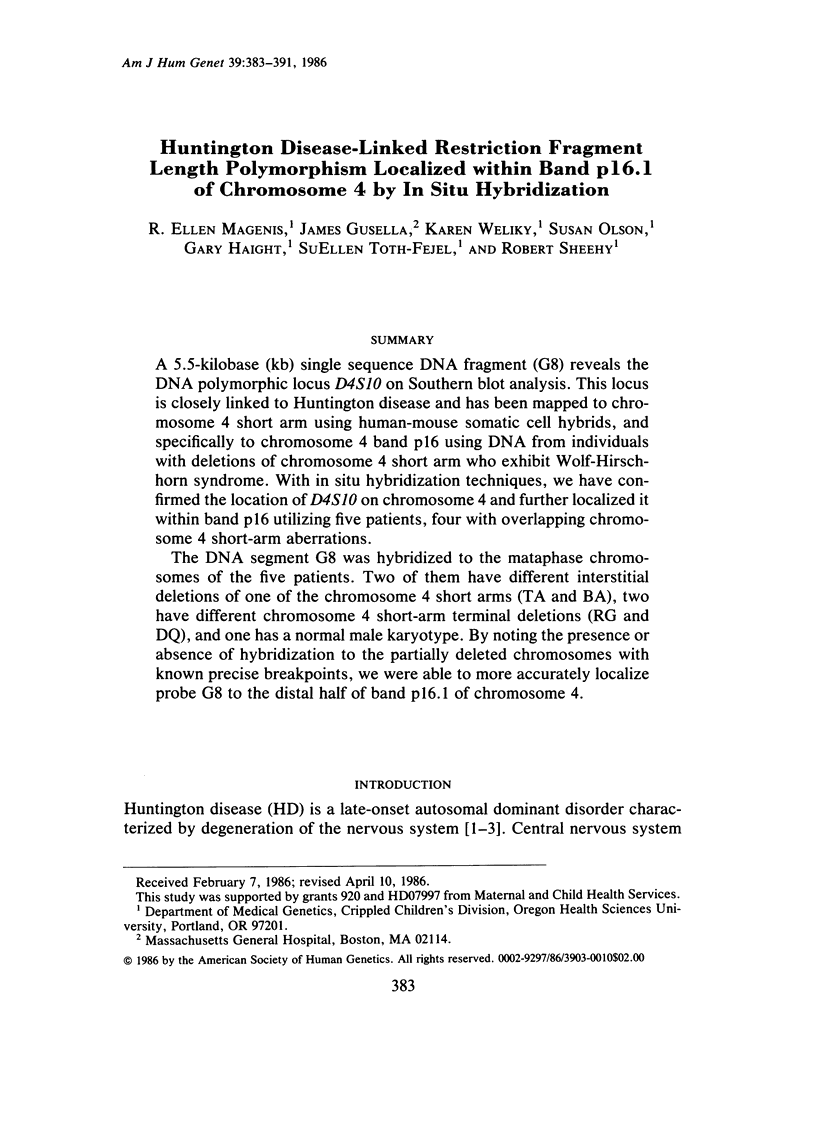
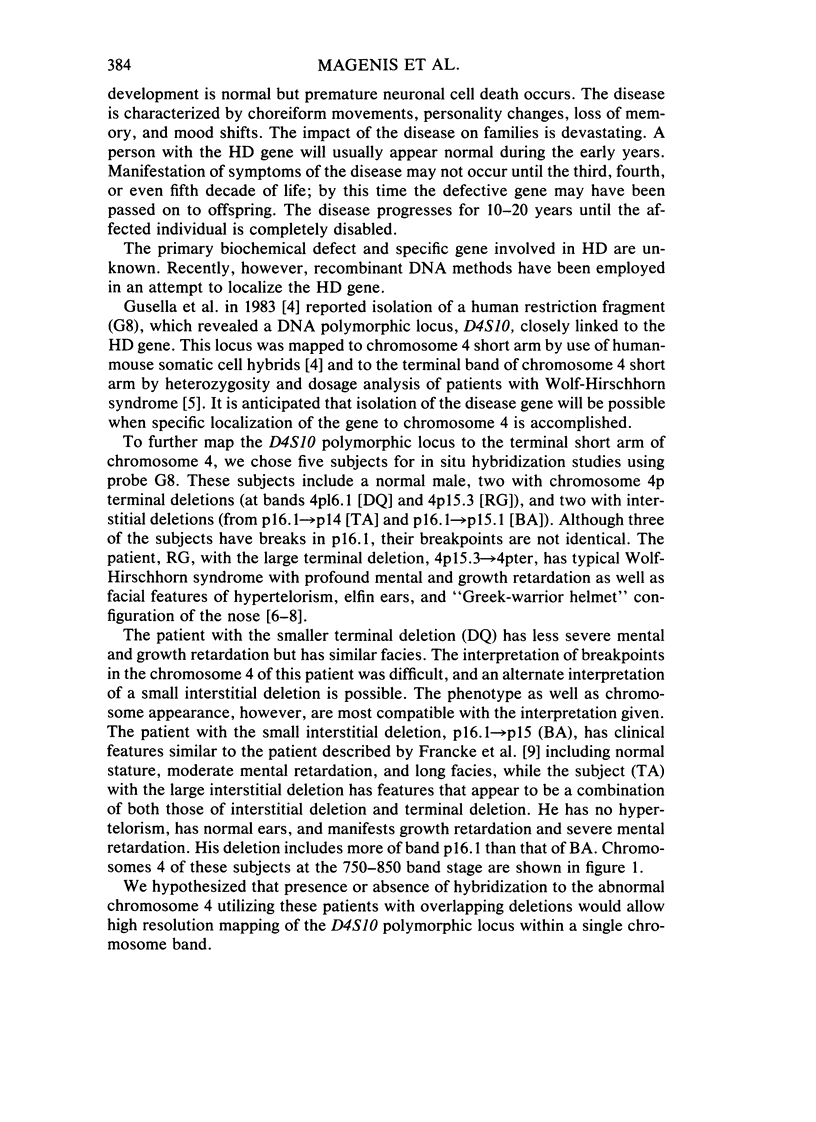
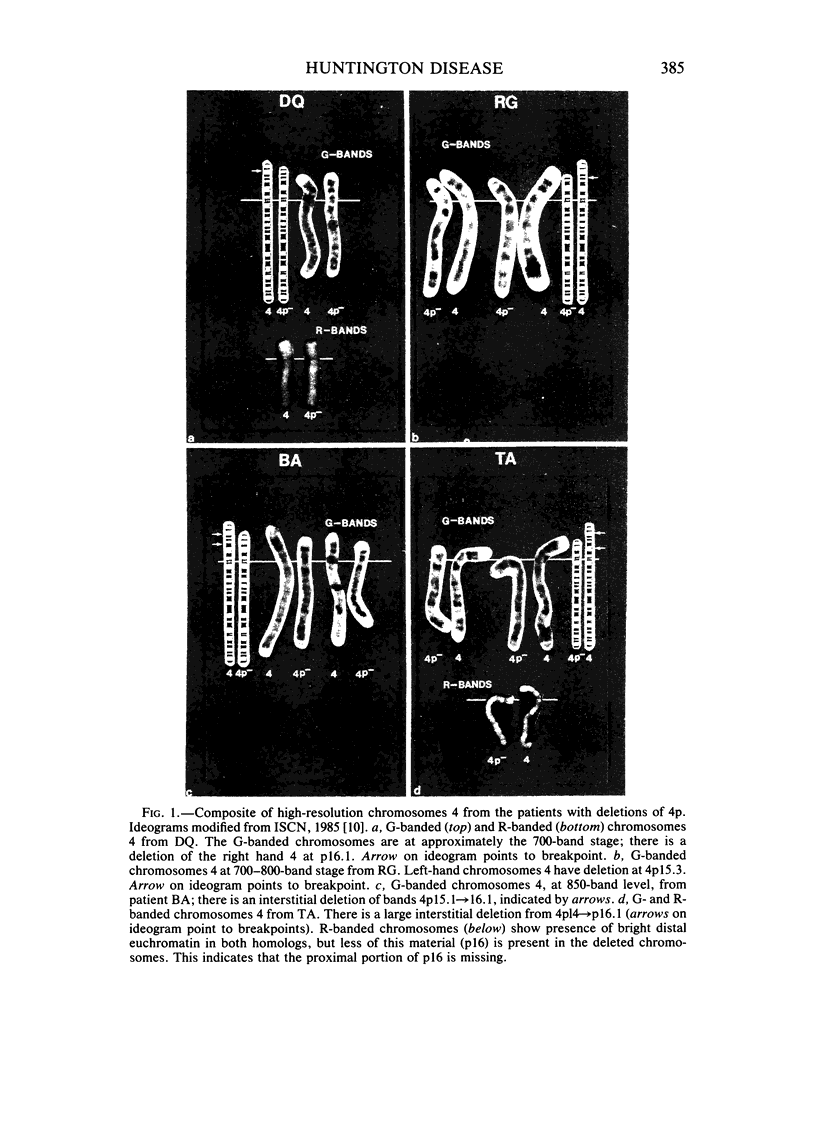
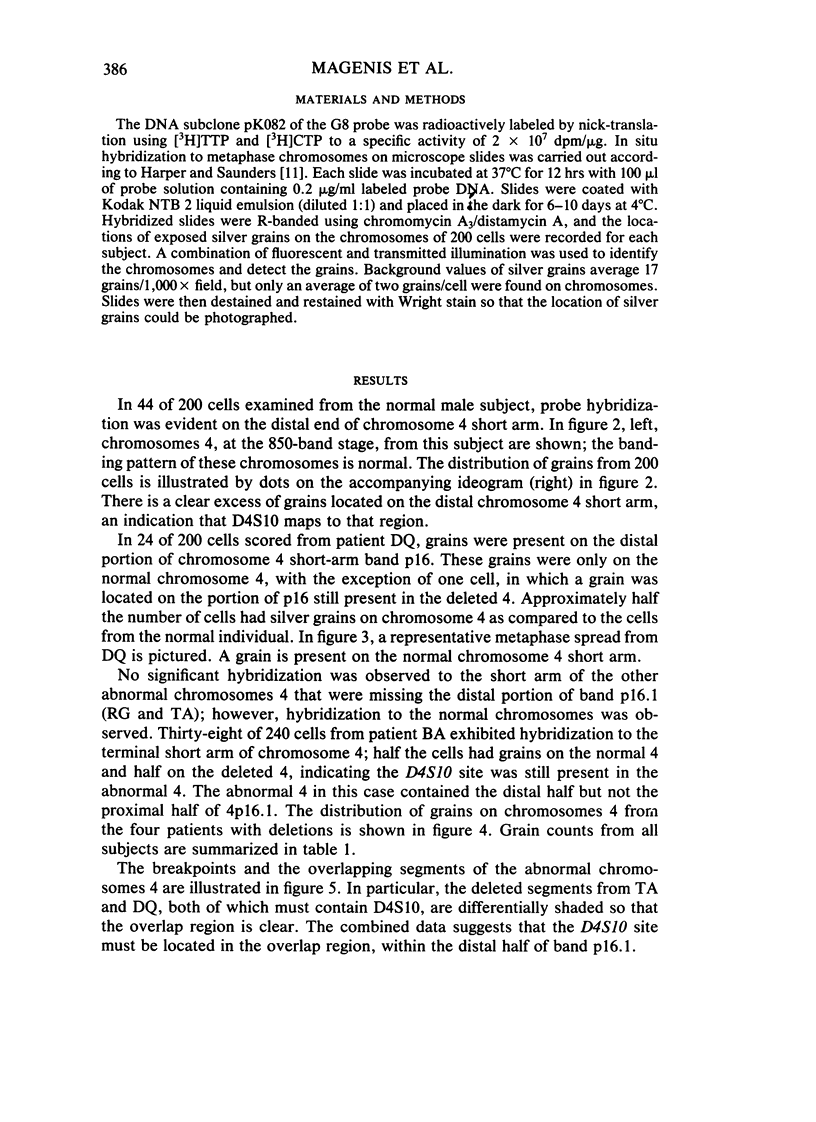
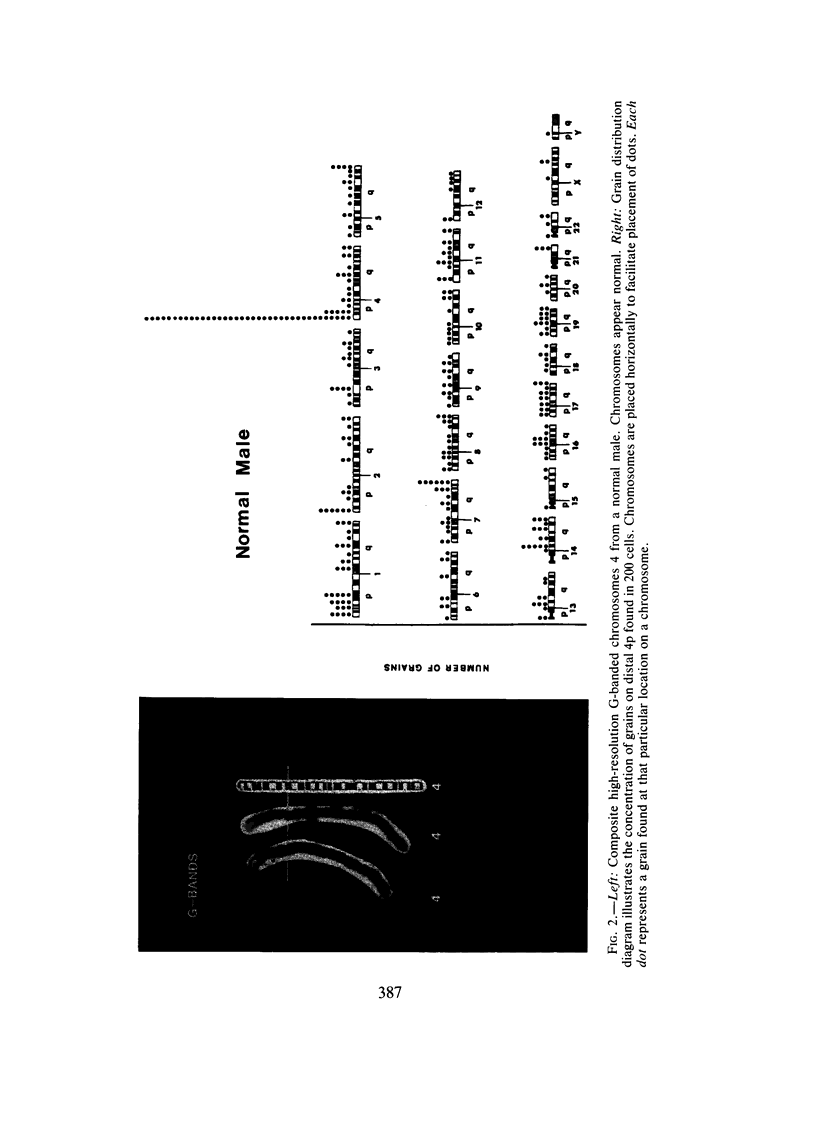
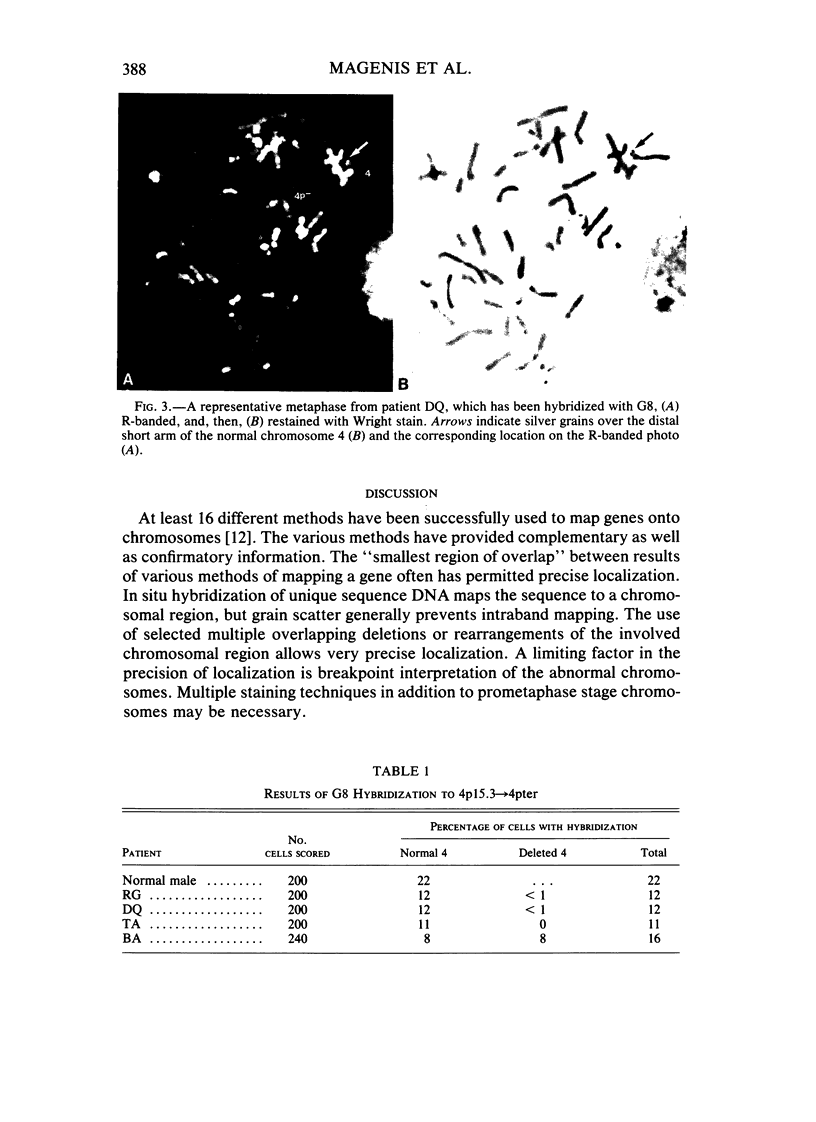
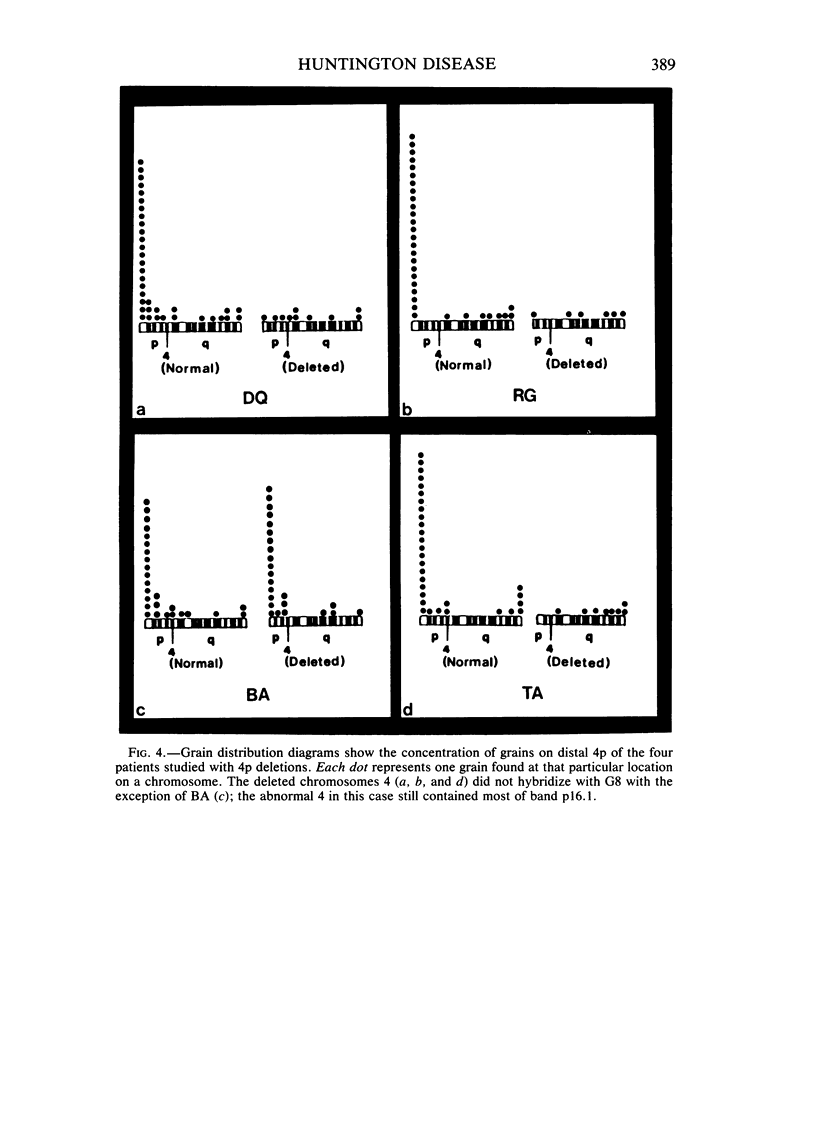
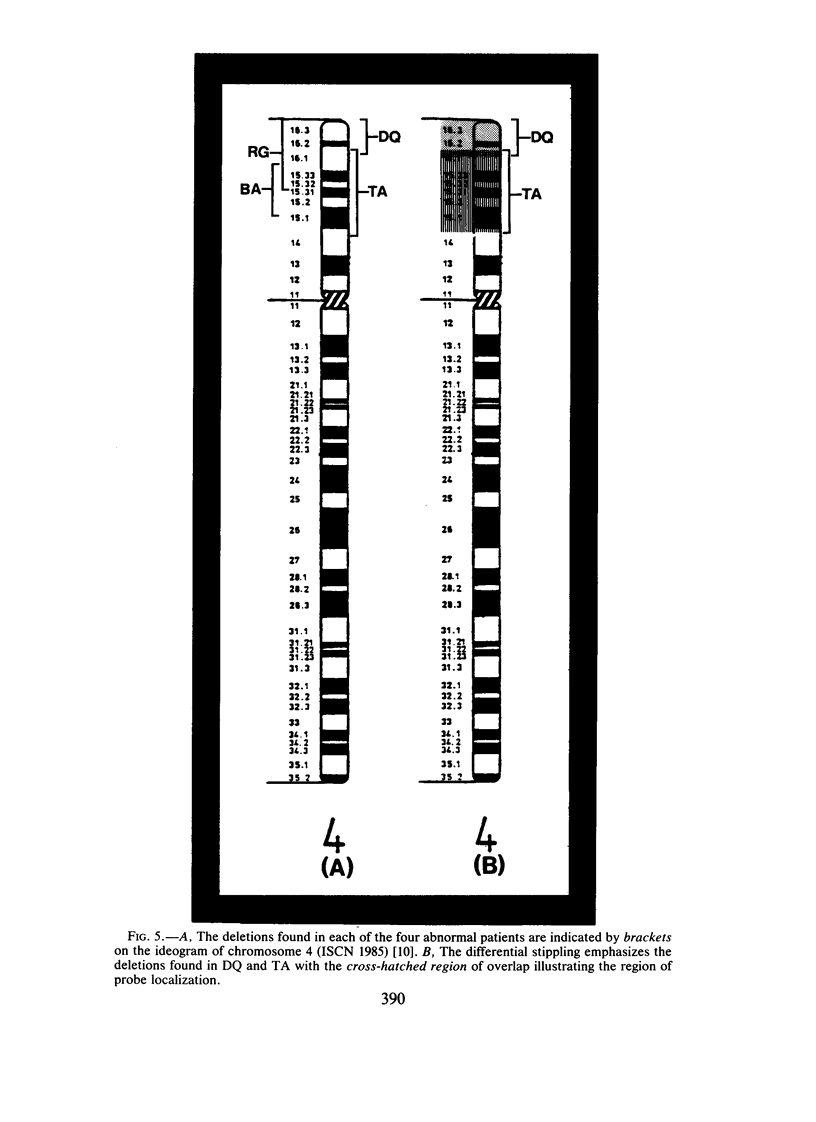
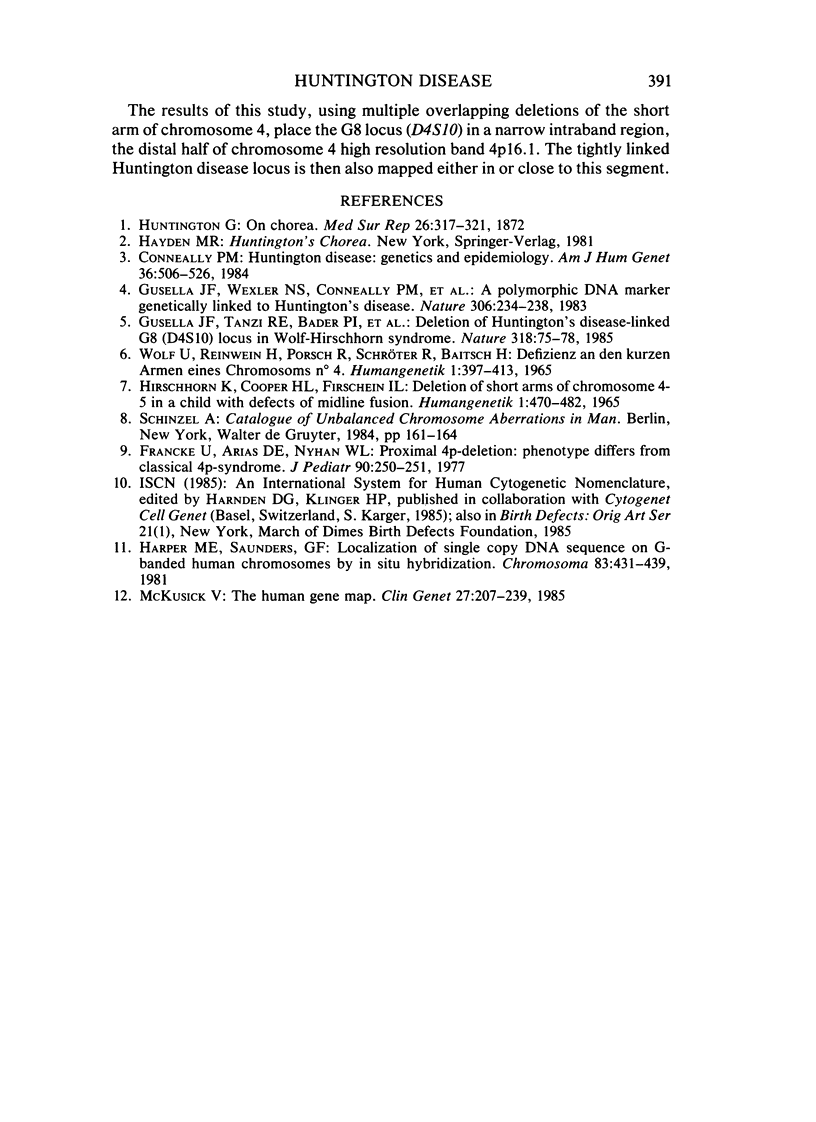
Images in this article
Selected References
These references are in PubMed. This may not be the complete list of references from this article.
- Conneally P. M. Huntington disease: genetics and epidemiology. Am J Hum Genet. 1984 May;36(3):506–526. [PMC free article] [PubMed] [Google Scholar]
- Francke U., Arias D. E., Nyham W. L. Proximal 4p-deletion: phenotype differs from classical 4p-syndrome. J Pediatr. 1977 Feb;90(2):250–252. doi: 10.1016/s0022-3476(77)80642-2. [DOI] [PubMed] [Google Scholar]
- Gusella J. F., Tanzi R. E., Bader P. I., Phelan M. C., Stevenson R., Hayden M. R., Hofman K. J., Faryniarz A. G., Gibbons K. Deletion of Huntington's disease-linked G8 (D4S10) locus in Wolf-Hirschhorn syndrome. Nature. 1985 Nov 7;318(6041):75–78. doi: 10.1038/318075a0. [DOI] [PubMed] [Google Scholar]
- Gusella J. F., Wexler N. S., Conneally P. M., Naylor S. L., Anderson M. A., Tanzi R. E., Watkins P. C., Ottina K., Wallace M. R., Sakaguchi A. Y. A polymorphic DNA marker genetically linked to Huntington's disease. Nature. 1983 Nov 17;306(5940):234–238. doi: 10.1038/306234a0. [DOI] [PubMed] [Google Scholar]
- Harper M. E., Saunders G. F. Localization of single copy DNA sequences of G-banded human chromosomes by in situ hybridization. Chromosoma. 1981;83(3):431–439. doi: 10.1007/BF00327364. [DOI] [PubMed] [Google Scholar]
- Hirschhorn K., Cooper H. L., Firschein I. L. Deletion of short arms of chromosome 4-5 in a child with defects of midline fusion. Humangenetik. 1965;1(5):479–482. doi: 10.1007/BF00279124. [DOI] [PubMed] [Google Scholar]
- McKusick V. A. The human gene map 1 December 1984. Clin Genet. 1985 Feb;27(2):207–239. doi: 10.1111/j.1399-0004.1985.tb00214.x. [DOI] [PMC free article] [PubMed] [Google Scholar]
- Wolf U., Reinwein H., Porsch R., Schröter R., Baitsch H. Defizienz an den kuzen Armen eins Chromosoms Nr. 4. Humangenetik. 1965;1(5):397–413. [PubMed] [Google Scholar]



